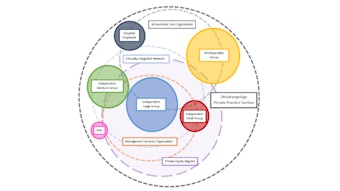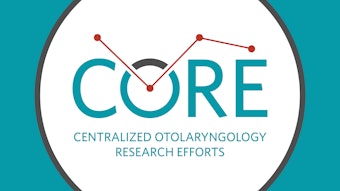Advancing Patient Safety and Quality Initiatives through Artificial Intelligence
AI holds significant promise in healthcare, transforming the practice and delivery of medicine.
Agnes M. Hurtuk, MD, Seckin Ulualp, MD, and John D. Cramer, MD, Patient Safety and Quality Improvement Committee members

Machine learning and natural language processing, integral to AI, have become indispensable tools in various medical applications, including those relevant to otolaryngology. Machine learning empowers computers to efficiently execute diverse tasks and generate desired outputs, evolving through continuous learning from extensive and diverse data and experiences. Meanwhile, natural language processing enriches a computer’s capacity to comprehend human language, making AI an integral part of otolaryngology across all subspecialties. The integration of AI into otolaryngology practice holds significant promise for elevating patient safety, accessibility, and efficiency of care.
The shared goal of healthcare systems to maintain and promote patient safety aligns with the capabilities of AI. AI’s capacity to analyze extensive data has the potential to identify risks, predict disease trajectories and outcomes, and enhance communication. Electronic health record systems with AI-based applications can identify and assess threats to patient safety. AI modeling of electronic health records demonstrates potential in predicting future illness trajectories and outcomes, particularly for chronic diseases such as diabetes. Addressing medication errors, AI-based models analyze large sets of medication event reports, contributing to prevention strategies. The implementation of AI also may assist clinicians in making better diagnoses. AI-based algorithms accurately identified maxillary sinusitis and graded the severity of sinus disease. Furthermore, preliminary data on digital biomarkers, including digital voice as a biomarker, show potential for early detection of heart disease, cognitive impairment, mental disorders, vocal cord disorders, or laryngeal cancer. Integrating AI findings with healthcare providers’ clinical observations can enhance diagnostic accuracy in cases of uncertainty. While evidence supports AI’s role in preventing medication errors and identifying risks to patient safety, the implementation of AI in patient safety and quality initiatives has pitfalls as well as potential ethical and legal dilemmas.
Addressing ethical and legal layers in AI implementation is crucial in creating trustworthy and transparent AI systems. AI systems, built on extensive data and complex algorithms, should embody human values. Transparency in data sourcing, selection criteria, bias measurement, and data usage is imperative. Insight into system development, operations, and any human decisions should be as transparent as possible to establish trust for the system. Efforts to eliminate potential biases from data and detect bias and mitigate bias collaboratively with data scientists and vendors are essential. Diverse teams addressing ethical aspects, including human dignity, values, fairness, potential bias or discrimination, benefit to populations, and avoidance of harm, are crucial. Once an AI system is built, disclosure to patients regarding its usage and granting them freedom of choice in utilizing AI is essential. The emerging need for specific AI rules and regulations in healthcare, potentially beyond the current Health Insurance Portability and Accountability Act (HIPPA) regulations, emphasizes the importance of protecting patient’s privacy and managing risks.
As with any evolving technology, implementation precedes formal regulations. For example, the evolution of cell phones in the 1990s over time led to regulations and laws on cell phone use while driving. Similarly, as AI is integrated into healthcare for prediction, diagnosis, and error alerting, increasing federal, state, and local regulation on data protection and ownership, and liability are anticipated. Stakeholders will necessitate enhanced security measures for regulatory oversight and for patient privacy and patient rights protection.
Undoubtedly, AI holds significant promise in healthcare, transforming the practice and delivery of medicine. AI technologies in healthcare, akin to Uber’s impact on the taxi industry, will benefit patients by providing timely and convenient care, alerting of potential drug interactions, and predicting or detecting diseases earlier. AI will likely gain wide acceptance from patients over time. Although some healthcare job classes may evolve or disappear, human judgment and touch remain irreplaceable for safe, quality, and compassionate care, ensuring the continued vital role of humans in patient care.
Resources
Amanian A, Heffernan A, Ishii M, Creighton FX, Thamboo A. The Evolution and Application of Artificial Intelligence in Rhinology: A State of the Art Review. Otolaryngol Head Neck Surg. 2023 Jul;169(1):21-30. doi: 10.1177/01945998221110076.
Bur AM, Shew M, New J. Artificial Intelligence for the Otolaryngologist: A State of the Art Review. Otolaryngol Head Neck Surg. 2019 Apr;160(4):603-611. doi: 10.1177/0194599819827507.
Choudhury, A., & Asan, O. (2020). Role of Artificial Intelligence in Patient Safety Outcomes: Systematic Literature Review. JMIR Medical Informatics, 8(7), e18599. https://doi.org/10.2196/18599
Miller DD, Brown EW. Artificial Intelligence in Medical Practice: The Question to the Answer? Am J Med. 2018 Feb;131(2):129-133. doi: 10.1016/j.amjmed.2017.10.035.
Sara JDS, Orbelo D, Maor E, et al. Guess What We Can Hear – Novel Voice Biomarkers for the Remote Detection of Disease. Mayo Clin Proc. 2023;98(9):1353-75. 10.1016/j.mayocp.2023.03.007




















